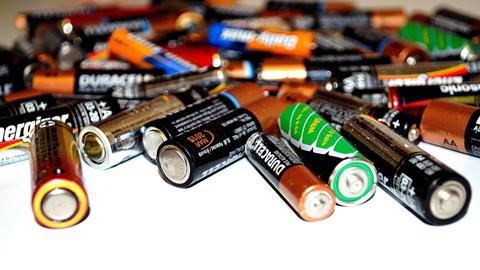Chinese researchers explain the loss of sulphur in lithium-sulphur batteries using electron microscopy in a Nature paper. Materials chemistry professor Moniek Tromp is critical.
Lithium-sulfur batteries could be the next generation of lithium-ion batteries. In theory, they can store a lot of energy. Sulphur atoms form S8 and can therefore transfer 16 electrons per molecule; two electrons per S. Moreover, sulphur is a waste product from the petrochemical industry, so it is widely available and cheap, although it has to be purified before it can be used in a battery. Despite their high energy density and relatively low cost, lithium-sulphur batteries have not yet been realised on a large scale. One of the problems is the high solubility of sulphur, which can precipitate with lithium as lithium sulphide on the lithium anode, deactivating the battery.
A team of researchers at Xiamen University has been working on this problem for some time. They previously developed a catalytic material that stopped the loss of sulphur when added to the sulphur cathode, but the mechanism of action remained unclear. In their latest research, now published in Nature, they use in situ electrochemical transmission electron microscopy with liquid cells to directly image the transformation of lithium polysulphides on the electrode surfaces at the atomic scale. This allows them to compare the situation with and without their catalyst. Lithium polysulphide bubbles appear to form on the cathode surface at the nanoscale. Without their catalyst, these do not appear. During discharge, the bubbles diffuse through the cathode and turn into nanocrystals of lithium sulphide.
Moniek Tromp, professor of materials chemistry at the University of Groningen, is surprised that Nature accepted the paper. ‘The authors skip a lot of points. They seem to completely ignore the solution chemistry of lithium, sulphur and the polysulphides.’ In the paper, the researchers look at what happens when their battery goes through (de-)charging cycles, but sulphur also dissolves naturally in the electrolyte and forms (lithium) polysulphides without charging or discharging. In addition, the battery is constructed differently than usual, says Tromp. ‘Normally, you put the electrodes with the largest surfaces against each other, so you have short diffusion paths. Here, two electrodes are placed horizontally, with the short side facing each other. I can understand that, you need that shape for electron microscopy, but the polysulphides have to diffuse over longer distances and therefore the electrochemistry is no longer reliable and the time scales between the species you see and their relationship to the electrochemistry start to overlap and you can no longer draw any conclusions.’
No new information
Trump thinks that the technique used is very nice, especially because they can see exactly which species are precipitating on the electrodes. But, as mentioned above, it ignores the liquid phase. ‘Many reactions take place in solution, between lithium, polysulphides and sulphur, in equilibrium disproportionation reactions of the polysulphide sulphur chains, which they cannot see. And these reactions take place chemically anyway, not just electrochemically. We have already shown this ourselves with operando X-ray spectroscopy and imaging, where we can see and measure both the dissolved species and the solid. It also tells us that the solid Li2S is already forming in solution, not just on the surface as you see here.’ For her, these new results confirm what she has already measured in her own group, but this study does not provide any new information. ‘They can’t relate it to the charge cycle. In my opinion, they only paint part of the picture.’
Tromp herself is also working on how to prevent lithium sulphide from being deposited on the anode. She suspects that a different electrolyte, membranes or coatings could offer a solution. ‘The polysulphides are so soluble, which is good for electrochemistry, but it’s tricky to make sure the products stay on the right side of the battery. In the end, you have to find a cheap, easy way of doing that.’
Zhou et al. (2023) Nature https://doi.org/10.1038/s41586-023-06326-8













Nog geen opmerkingen